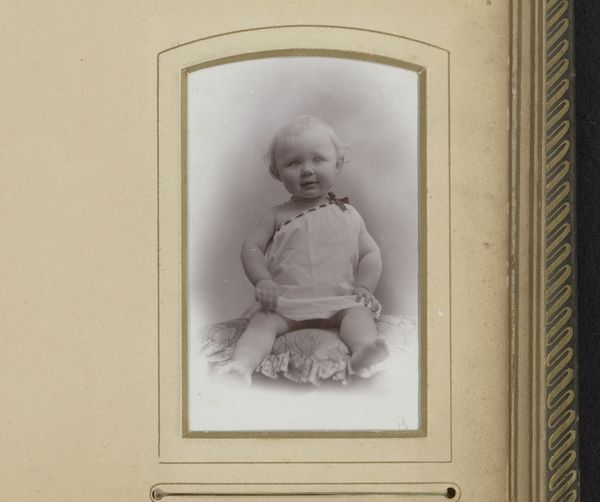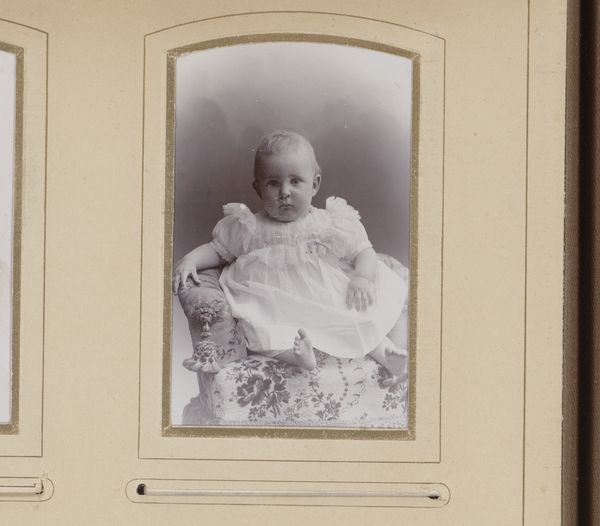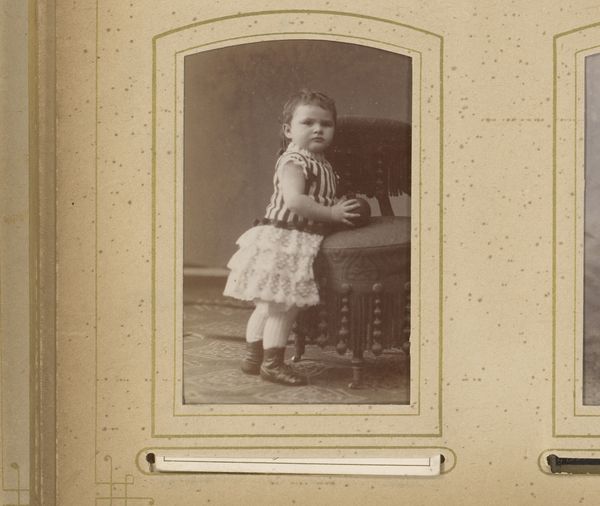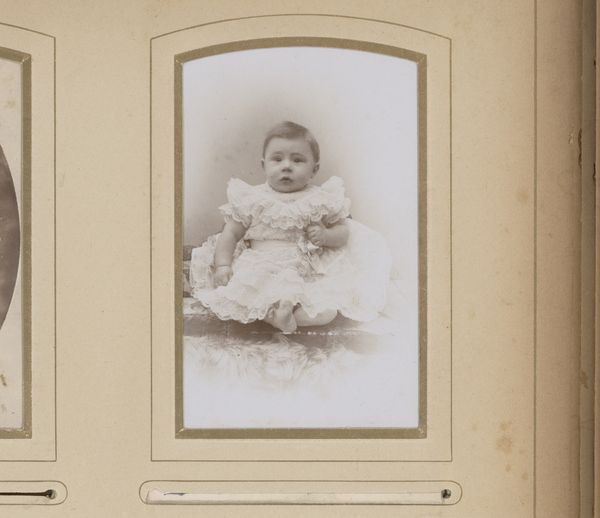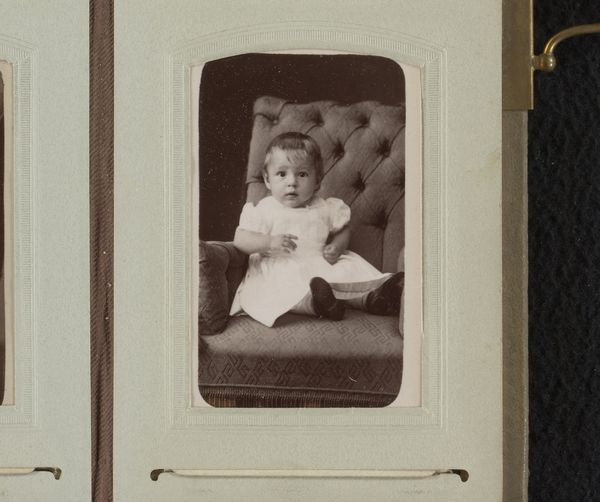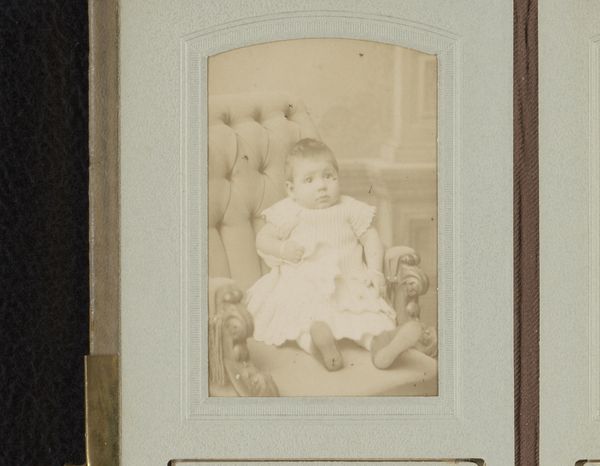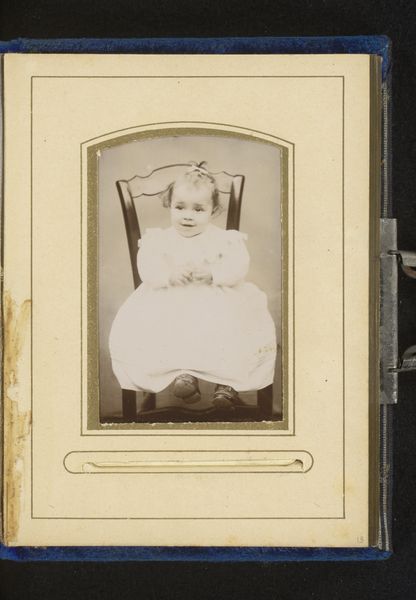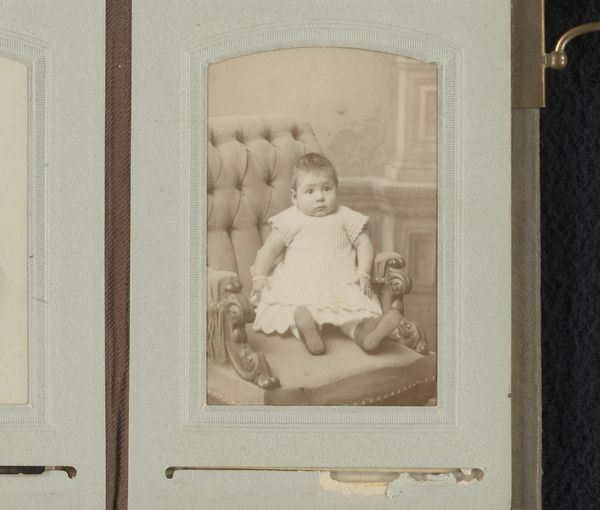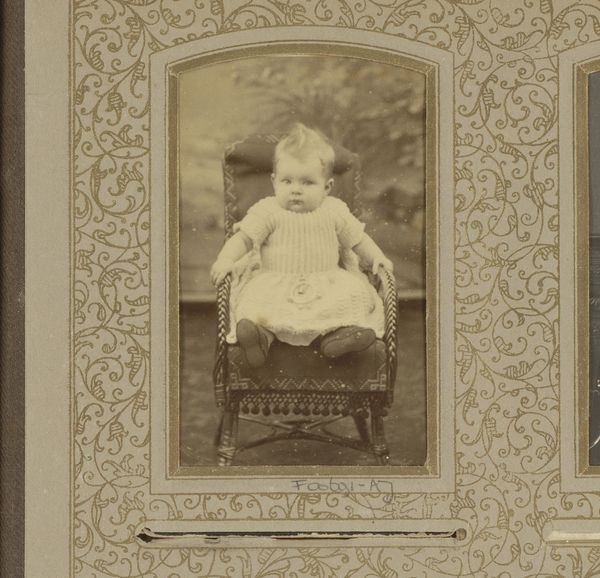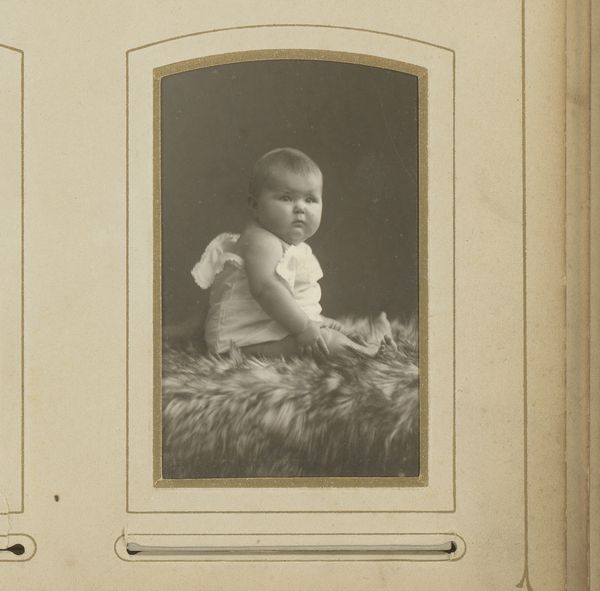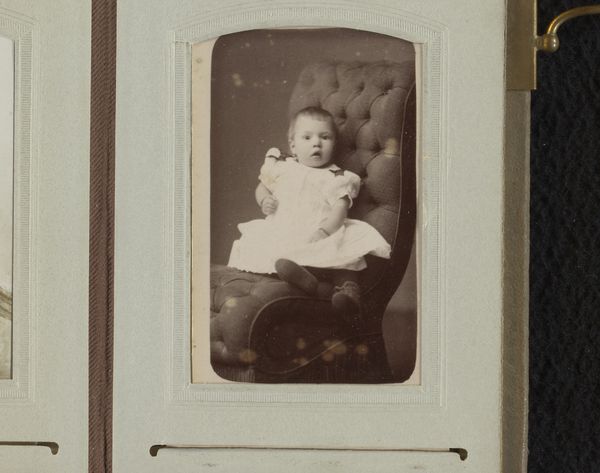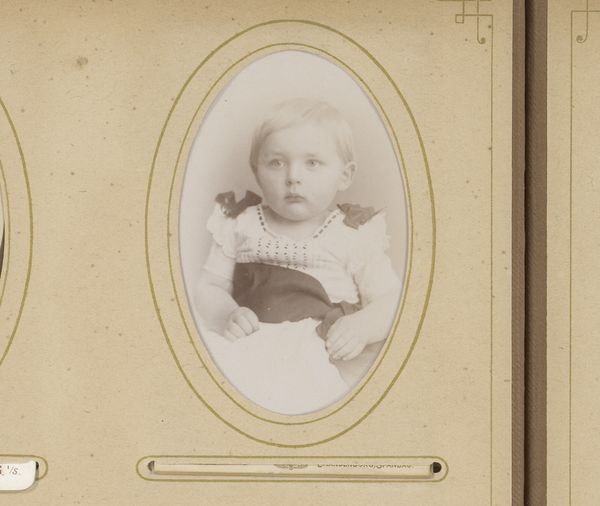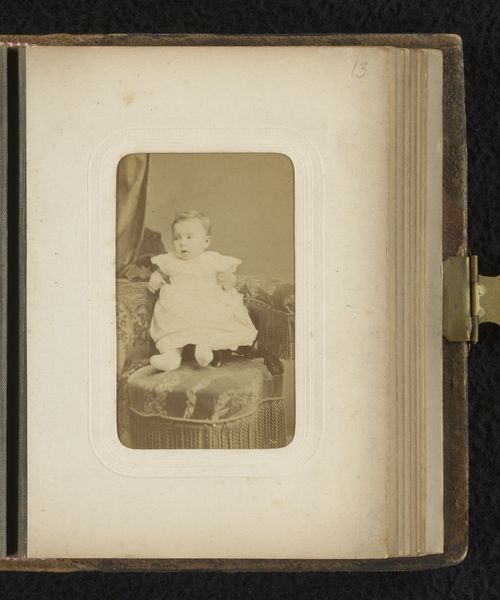
photography, albumen-print
#
portrait
#
toned paper
#
charcoal art
#
photography
#
framed image
#
albumen-print
Dimensions: height 84 mm, width 54 mm
Copyright: Rijks Museum: Open Domain
Curator: This albumen print, "Portret van een baby op een stoel," created around 1890-1910 by W.G. Kuijer & Zonen, offers a glimpse into late 19th-century photography. Editor: It has an air of formality, doesn't it? The child's expression is rather serious, and the backdrop is kept neutral, but the baby is wearing a pristine white dress and is sat on a decorative cushion. It evokes a sense of posed respectability. Curator: Absolutely. This kind of portrait was about constructing an image, not just capturing a moment. In that era, photography served a specific public and social function. These studio portraits served as important mementos, showcasing family status. Editor: Looking at it now, I am reminded of issues of childhood, representation and visibility. Did the child have agency here? Who gets to decide how a child's image is presented and preserved? What does that say about social power, even in something as seemingly innocent as a baby portrait? Curator: That’s a really pertinent question. Examining the societal conventions surrounding infant photography is vital here. These staged photographs also served to idealize notions of purity and innocence of the child during this era. Editor: True, and the photograph, perhaps unintentionally, becomes an archive of not just a family history but also the historical constraints of childhood identity. This contrasts sharply with our contemporary world, with social media creating an always online infantilized image. Curator: These portraits can sometimes also underscore broader questions about the rise of the nuclear family and photographic portraits as signifiers of belonging, domesticity, and connection to kinship, however idealised those representations could often be. Editor: It's amazing how much can be extracted from such a seemingly simple image when viewing it within the lens of both past constraints and future considerations. Curator: Indeed. This unassuming image provides much insight on how photographic imagery both represented and shaped public life and history.
Comments
No comments
Be the first to comment and join the conversation on the ultimate creative platform.
